Aidan Brown's Research Page
Research
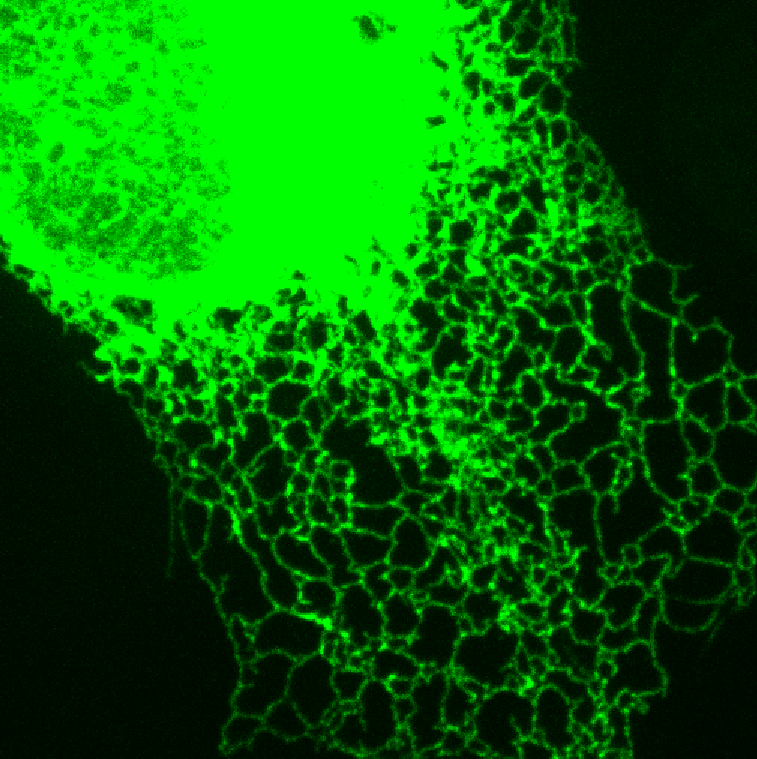
Endoplasmic reticulum network |
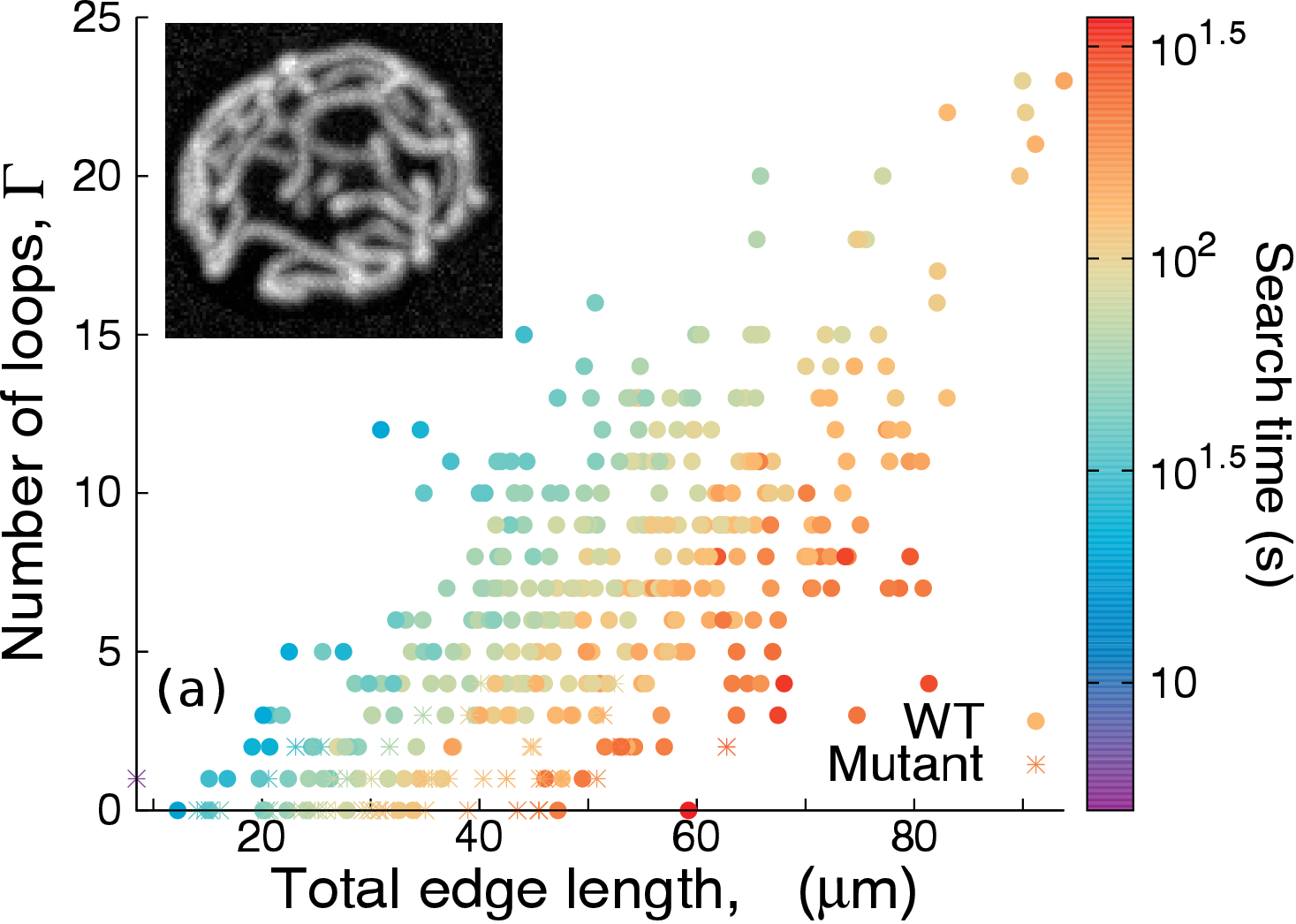
Search times on mitochondrial networks |
Diffusion in intracellular compartments Cellular organelles provide confined microenvironments, including the tubular networks of the endoplasmic reticulum and mitochondria. The size and topology of these organelles control search timescales and chemical kinetics. This work emphasizes the ability of physical size and shape to regulate biological activity. Related publications: |
||
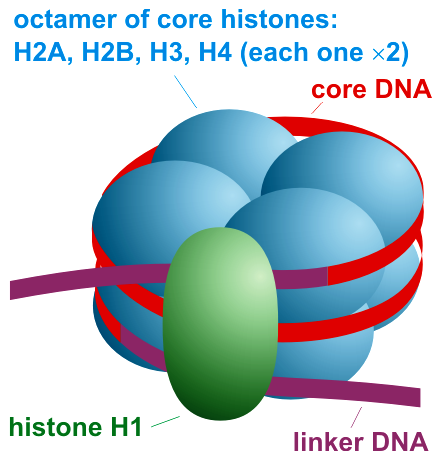
Nucleosome organization |

DNA-protein interaction energy |
Energy barriers in cell biology DNA transcription involves a 'polymerase' machine that walks along DNA copying the letters into RNA. DNA in the nucleus is organized into structures that present an energy barrier to transcription by the polymerase. By combining sophisticated experiments with computational modeling, this energy barrier can be probed and related to gene expression phenomena. Related publications: |
||
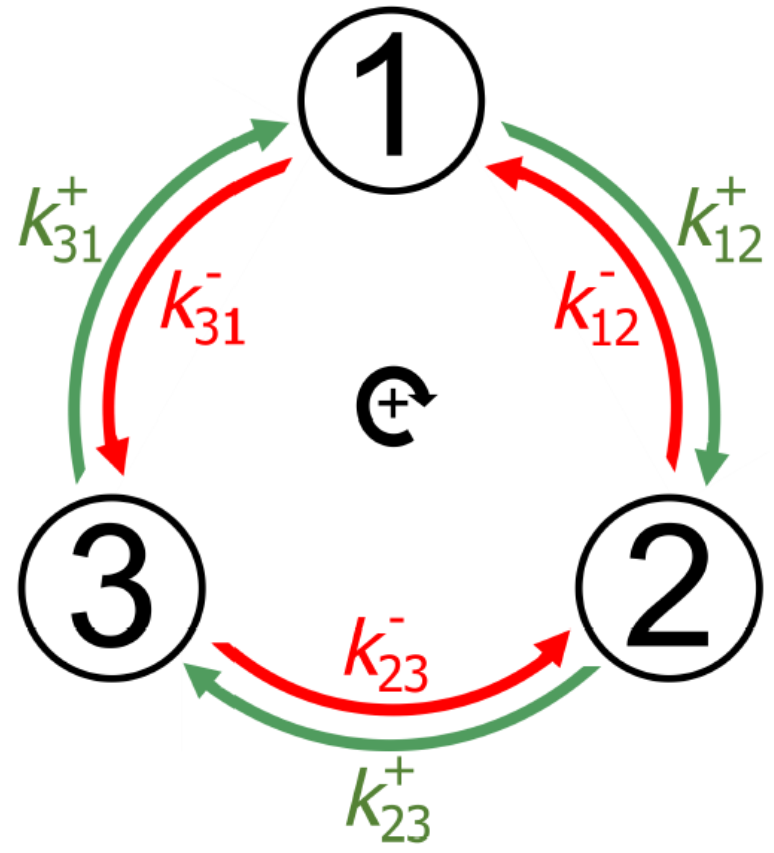
Discrete state kinetic model of a molecular machine |

ATP synthase |
Molecular machine energy use Molecular machines are effectively governed by a different set of physical rules than the much larger machines that are part of everyday life. Molecular machine operation is fundamentally nonequilibrium, and the necessary free energy expenditure can be adjusted to enhance reliable directed behavior, increase speed, and improve performance overall. This research points towards design principles that can be selected by both biological evolution and human engineers. Related publications: |
||
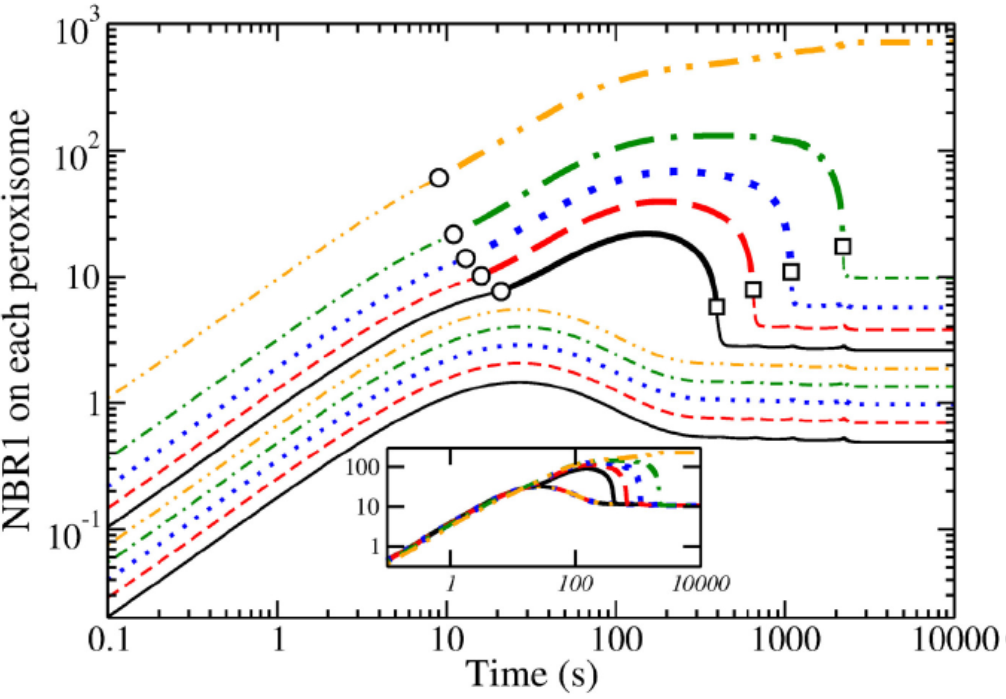
Protein cluster nucleation and evaporation |

Modeling cluster growth on organelles |
Protein accumulation and intracellular signaling dynamics Cellular processes are carried through, regulated, and signaled by the accumulation of proteins on specific substrates, often forming phase-separated microdomains. Physical characteristics such as substrate size influence the diffusive search by proteins for and competition between their targets. This work highlights the physical aspects of self-organization in cell biology. Related publications: |
||

Energy minima defining collagen fibril radii |
 Material diffuses to growing fibrils in collagen bundle |
Collagen filament mechanics and growth The protein collagen is an essential structural component in our bodies, organized into bundles of fibrils. Each fibril is a tube containing many collagen molecules, which can be modeled with both phase separation and liquid crystal theories. The size and growth of the collagen fibrils are subject to corresponding physical constraints. Related publications: |
||
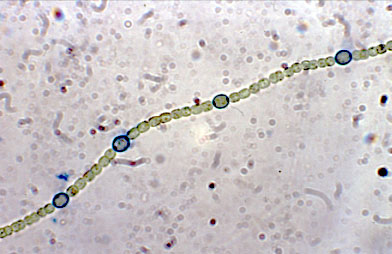
Regularly spaced heterocysts |

Heterocyst spacing scaling collapse |
Differentiation patterns in bacterial filaments Heterocyst cells, which form a regularly-spaced pattern in cyanobacteria, are specialized to extract metabolically-accessible nitrogen from the atmosphere, essential to all life. Heterocyst differentiation is a model system for understanding biological pattern formation, limited to two cell types and one dimension. The generation and maintenance of the heterocyst differentiation pattern is controlled by the interplay of diffusion, growth, nutrient deficiency, and gene expression. Related publications: |
||
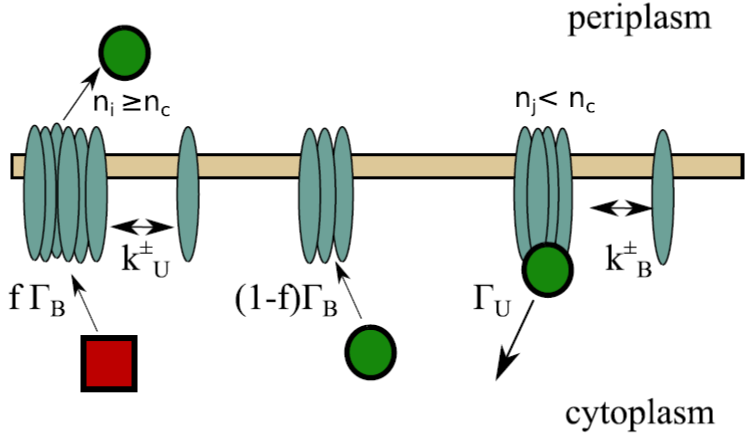
Tat export complex dynamics |

Export complex size distribution |
Protein quality control Cellular systems must discard incorrect or defective substrates to maintain their regular operation. The Tat export system exemplifies this behaviour, growing to accommodate various substrate sizes, while unbinding those that are not exportable. This work highlights one of the many quality control strategies cells use to perform in the face of an internal zoo of functional and dysfunctional macromolecules. Related publications: |